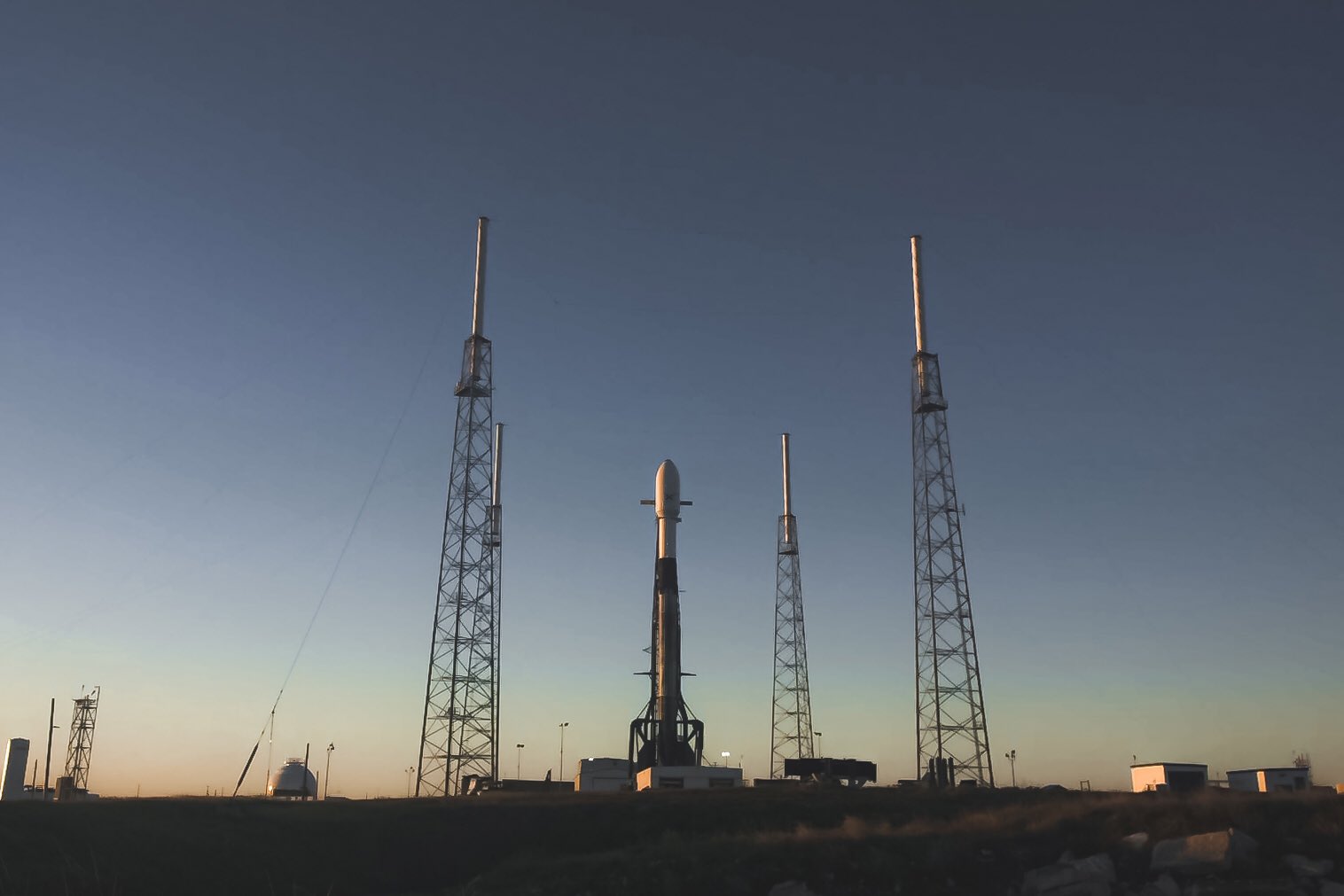SpaceX Will Launch 60 Starlink Satellites into Orbit Tonight. Here's How to Watch It Live.
Liftoff is at 9:19 p.m. EST (0219 GMT).
Update for 10:30 pm ET: SpaceX has successfully launched 60 Starlink satellites on its Starlink-2 mission and set a record for the biggest satellite constellation in orbit today. Read our full story here.
Original story:
The private spaceflight company SpaceX will launch 60 new Starlink internet satellites to join its growing megaconstellation in orbit today (Jan. 6), and you can watch it live online.
A SpaceX Falcon 9 rocket will launch the Starlink mission from Space Launch Complex 40 at Cape Canaveral Air Force Station in Florida. Liftoff is scheduled for 9:19 p.m. EST (0219 GMT Tuesday).
You can watch the launch webcast live on Space.com, courtesy of SpaceX, beginning at about 9:04 p.m. EST (0204 GMT). You can also watch the launch directly from SpaceX here.
Related: SpaceX Tests Rocket for 60-Satellite Starlink Launch, the 1st of 2020

This is SpaceX's first launch of the year and the third Starlink launch to date. The mission will also mark the second time SpaceX has flown a Falcon 9 first-stage booster for the fourth time; this booster previously hoisted another batch of Starlink satellites as well as the Iridium-8 and Telstar 18 VANTAGE missions.
Get the Space.com Newsletter
Breaking space news, the latest updates on rocket launches, skywatching events and more!
The goal of SpaceX's Starlink project is to provide constant high-speed internet access to users around the world through a massive constellation of broadband internet satellites operating in low-Earth orbit. Users on the ground would then only need a small terminal, no bigger than a laptop to gain internet access.
"Starlink will provide fast, reliable internet to locations where access has been unreliable, expensive, or completely unavailable," the company wrote in its Starlink mission description.
The majority of SpaceX's missions in 2020 will consist of Starlink launches as the company works to expand its fleet of internet-beaming satellites, including at least one more batch of 60 Starlink satellites scheduled to launch before the end of January. SpaceX CEO and founder Elon Musk has said the company will need at least 400 Starlink satellites in orbit to offer "minor" broadband coverage, and at least 800 to provide "moderate" coverage.
SpaceX plans to operate its initial batch of 1,584 satellites 341 miles (549 kilometers) above the Earth, hovering much lower than traditional communications satellites that operate out of geostationary orbit. Those satellites are too far away to provide the kind of lower-cost coverage SpaceX aims to establish, Musk has said.
But SpaceX is not the only one; several companies (including OneWeb, TeleSat, and Amazon) are planning to build similar satellite constellations that would provide internet to the masses. OneWeb launched its first six satellites in 2019. With today's launch, the number of Starlink satellites in orbit will increase to 180, putting SpaceX on a path to be the first to provide extensive coverage.
Related: SpaceX's 1st Starlink Megaconstellation Launch in Photos!
According to the company, Starlink commercial internet services could debut in parts of the U.S. and Canada after about half a dozen more launches, with global coverage after 24 launches. SpaceX's Gwynne Shotwell has said that coverage could begin sometime this year, but the company has not yet announced pricing for its new service.
Weather conditions are favorable for launch tonight during the planned 20-minute window, which opens at 9:19 p.m. EST (0219 GMT Tuesday). The only weather-related concern noted by the 45th Weather Squadron is the potential for cumulus clouds.
If SpaceX is unable to launch its new Starlink mission today, the company has a backup launch opportunity on Tuesday (Jan. 7) at 8:57 p.m. EST (0157 GMT on Jan. 8).
Visit Space.com today for complete coverage of SpaceX's Starlink launch.
- SpaceX's Starlink Constellation Could Swell by 30,000 More Satellites
- SpaceX's Starlink Broadband Service Will Begin in 2020: Report
- 'Whoa, It Worked': Elon Musk Tweets Via SpaceX's Starlink Satellites
Follow Amy Thompson on Twitter @astrogingersnap. Follow us on Twitter @Spacedotcom or Facebook.

Join our Space Forums to keep talking space on the latest missions, night sky and more! And if you have a news tip, correction or comment, let us know at: community@space.com.

Amy Thompson is a Florida-based space and science journalist, who joined Space.com as a contributing writer in 2015. She's passionate about all things space and is a huge science and science-fiction geek. Star Wars is her favorite fandom, with that sassy little droid, R2D2 being her favorite. She studied science at the University of Florida, earning a degree in microbiology. Her work has also been published in Newsweek, VICE, Smithsonian, and many more. Now she chases rockets, writing about launches, commercial space, space station science, and everything in between.
-
jdarpinian You can also watch the satellites as they pass over your house after the launch! Check this site for viewing times: https://james.darpinian.com/satellites/?special=starlink-2Reply -
xyz Cool. More space trash getting in the way of astronomy and space flights. Because there isn't enough garbage circling the earth as it is.Reply









